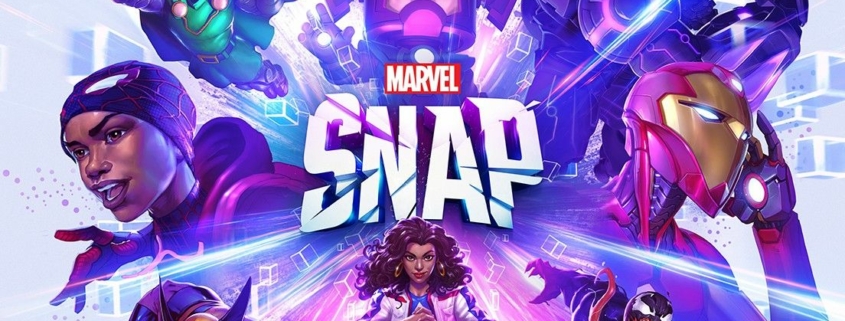The state of Marvel Snap in 2023: super quick card battles, super slow progression
After a lengthy beta period, card battler Marvel Snap launched on Steam and mobile on October 18 last year—and quickly found huge success. It’s easy to see why. Headed up by former Hearthstone lead Ben Brode, it reimagines Hearthstone’s deck-building formula into something even quicker and more accessible. At the same time, it offers Marvel fans—which at this point is half the universe—a chance to collect their favourite superheroes, level them up through a series of cosmetic tiers, split them into new versions with new colours and effects, and unlock skins drawing on moments from the comics and the work of popular artists.
While the PC version feels a little awkward compared to its mobile counterpart, it’s still an intoxicating experience. Rapid matches and countless progression hooks keep you coming back day after day, even if a lot of the in-match action can feel quite random or overly simple. It’s not a tactical powerhouse ready to rival the competitive mechanics of Magic: The Gathering, or content-rich enough to be a Hearthstone-level time sink, but once you’re in its clutches, you’ll find it’s the thing you go back to every time you have a spare 15 minutes. It is the ultimate snack game, and if it’s got you for half your lunch break every day for a week, it’s doing its job.
So, how is it right now?
With new cards and locations added each month, the game continues to feel pretty fresh. The meta rarely has a chance to settle, and limited-time events—primarily boosting the appearance rates of certain impactful locations—mix things up day by day. Certain cards draw ire, such as the game-swinging Leader who copies your opponent’s plays in the final turn, but on the whole, the core competitive experience feels varied and healthy.
But that doesn’t mean the current state of the game is all rosy. As it stands, the game’s huge Achilles’ heel is the process of acquiring new cards. At early levels, progression is a breeze, where you’ll regularly be adding to your collection and opening up new deck archetypes. Once you get past collection level 1,000, however—a big number, but one that doesn’t take that much time to reach—things slow to a crawl, and it only gets worse as you complete each “series” of cards.
New cards introduced to the game start in series 4 or 5—the highest, rarest tiers—which functionally means that only dedicated players—those who’ve been regularly advancing since the beta started—have any chance of getting them, and even for them it could be a month-long grind or more. The recent addition of a “token shop” where you can buy specific cards has failed to help because the tokens themselves are incredibly rare and slow to earn too.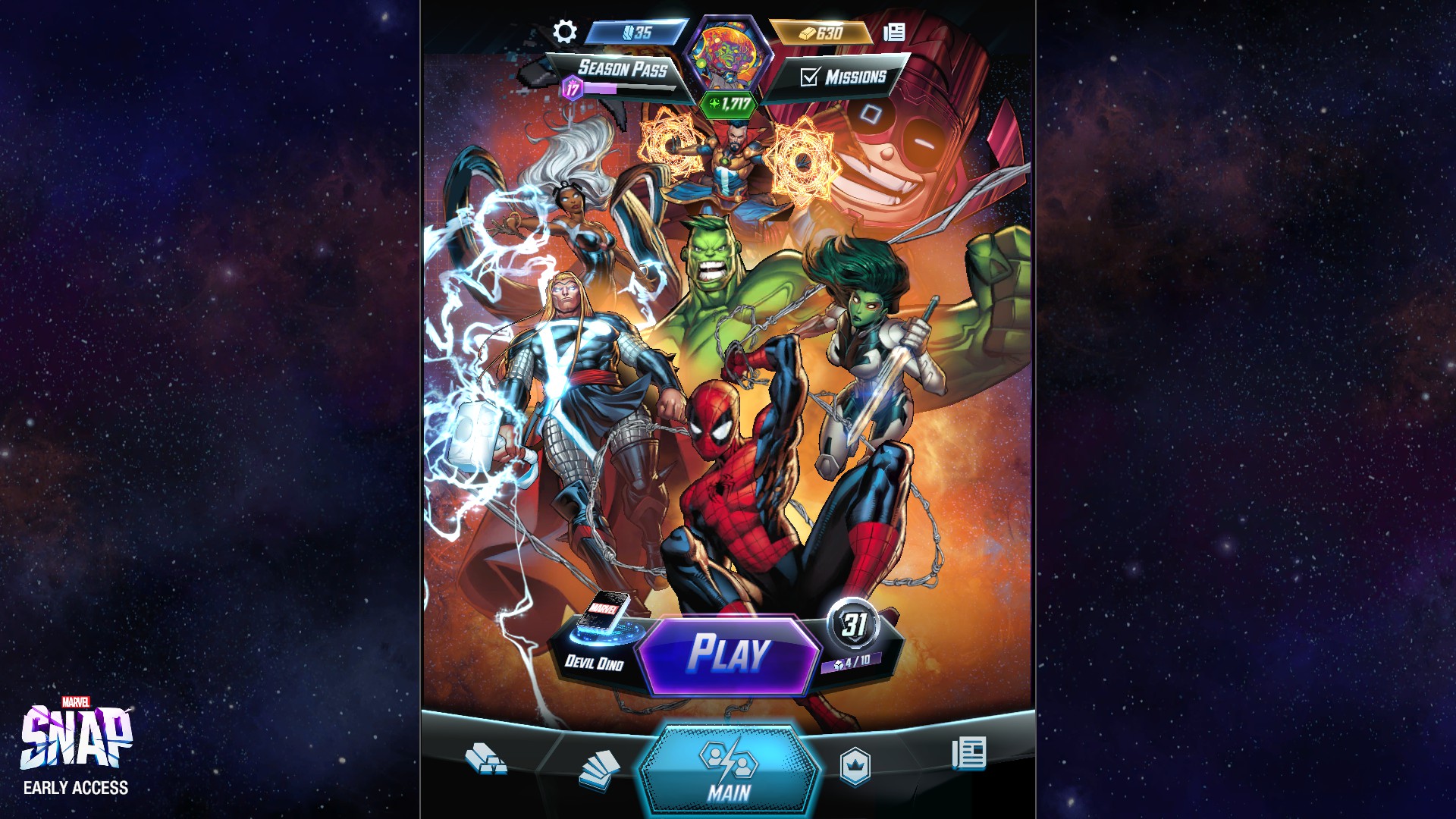
Are players happy?
PC vs mobile
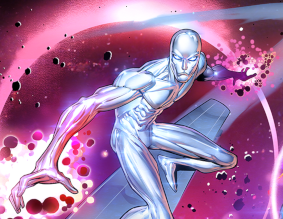
The PC version remains in Early Access for now, and it does lag behind the mobile client. Updates are simultaneous across both, and all progress transfers automatically between them, but the UI on PC is an awkward adaptation, and certain features—such as the news tab, and some events—are simply missing for now.
They are not. That throttled progression, and the failure of updates to successfully address it, is a huge point of contention. It makes the game an incredible grind, and the odd thing is it’s not one you can even really buy your way out of. Indulging in microtransactions barely moves the needle—because you usually can’t buy cards or tokens directly, and there’s no such thing as a card pack, even large investments are more likely to return junk than the high-value cards you’re after. To put things in perspective, brute-forcing the system to get a complete collection cost YouTuber RegisKillbin $2,700.
The result is a situation almost worse than pay-to-win—it’s a card game where the new cards introduced each month are completely unattainable for almost everyone. Eventually they filter down to a lower, more accessible series, but only months later, after their time in the spotlight has long passed.
That’s not a recipe for a happy community. It’s impossible to get excited about new cards you’re not going to get to try, so every new reveal is met with grumbles instead of theory-crafting. Players spend more time discussing optimal purchases and bemoaning bad pulls than they do game strategy, and there’s a growing distrust in the developers. As the face of the game, Ben Brode himself is a particularly prominent target for unhappy posters. 
Further compounding the problem is the divide between those who played in the beta and those who didn’t—the haves and have-nots of Marvel Snap. With progression from that period retained, those who got in on the ground floor are absurdly further ahead in their collections than those who started at the actual launch, and it’s hard to conceive of a progression system that could possibly please both groups at this point. The reason for the incredible rarity of series 4 and 5 cards is clearly to give those long-standing beta players, many of whom have been hoarding resources for months, something to actually aim for.
If progression had been left as it was, beta players would acquire new cards far faster than the developers could keep up with. But throttling it for their benefit leaves newer players in the dust, and the beta players remain frustrated too. It’s a no-win scenario with no obvious way out.
All of that is really not helped by the developer’s recent experimentation with bundle pricing. It’s now routine to see featured bundles on the game’s store that offer one to three card skins and some currency for $100 or more. It’s a steep price for cosmetics that the community largely agrees haven’t been of a good standard anyway, and do little to get you closer to new cards.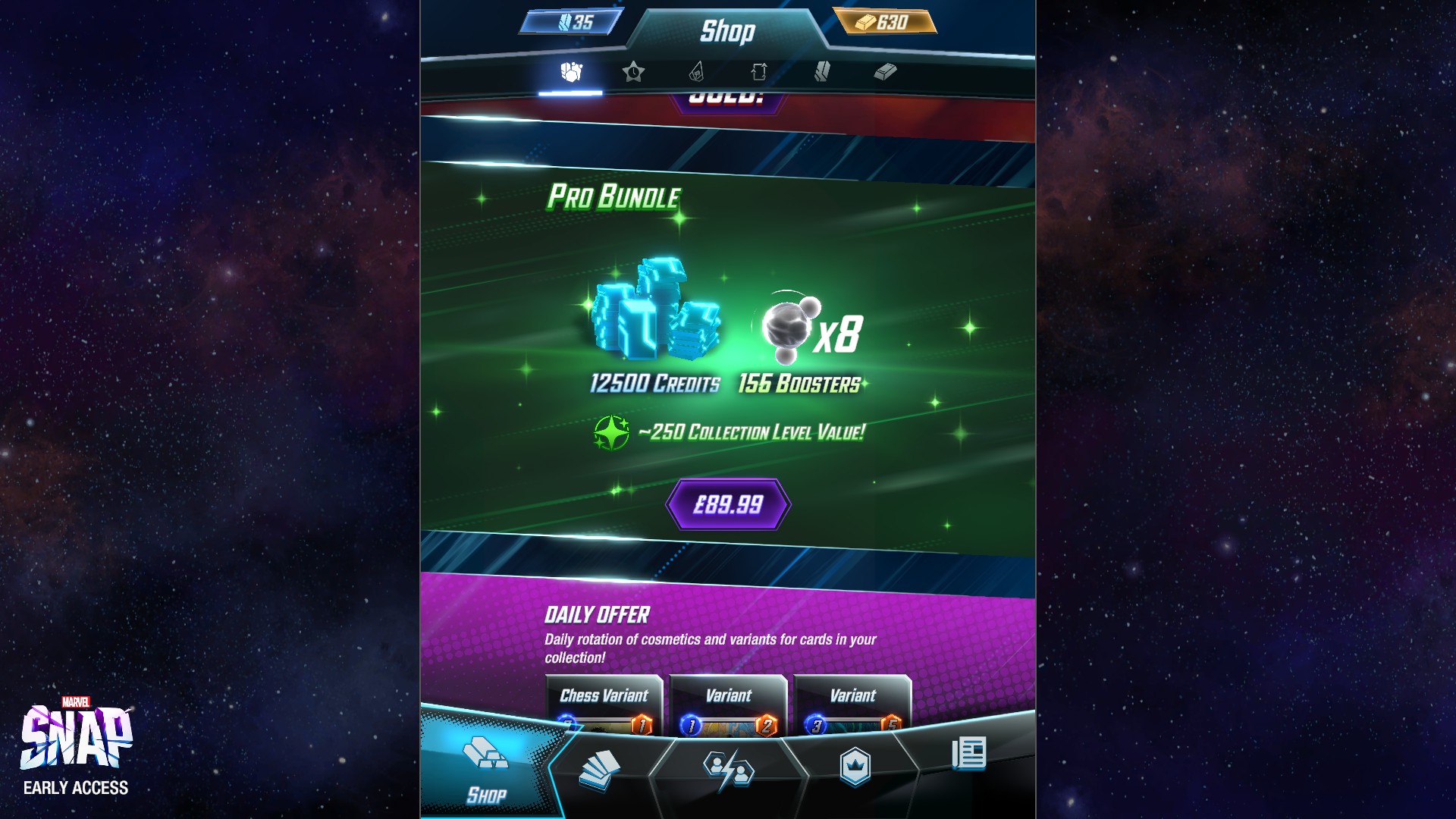
When’s the next update?
Each month new cards are released alongside a new season pass, laden with variants, avatars, titles, and currencies, usually tying into the latest MCU release. February’s season pass, which should launch on the first of the month, is themed around the Ant-Man and the Wasp: Quantumania film. It’ll introduce MODOK to the game—an interesting card that discards your entire hand when played, potentially making him a dramatic combo piece in certain discard decks. Also in the mix are new variants for Ant-Man and the Wasp themselves.
Developer Second Dinner has promised it’s continuing to look at possible updates to progression, and it’s heartening at least to see that they are aware of the problems, but as it stands, there’s no concrete information on what they plan to do. The approach so far has felt floundering, and the team has a lot of work to do to earn back the community’s confidence. I’d really like to see them figure it out, but even as someone who still dips in every day, I fear that the game’s magic is in serious danger of drying up.
After a lengthy beta period, card battler Marvel Snap launched on Steam and mobile on October 18 last year—and quickly found huge success. It’s easy to see why. Headed up by former Hearthstone lead Ben Brode, it reimagines Hearthstone’s deck-building formula into something even quicker and more accessible. At the same time, it offers Marvel fans—which at this point is half the universe—a chance to collect their favourite superheroes, level them up through a series of cosmetic tiers, split them into new versions with new colours and effects, and unlock skins drawing on moments from the comics and the work of popular artists.
While the PC version feels a little awkward compared to its mobile counterpart, it’s still an intoxicating experience. Rapid matches and countless progression hooks keep you coming back day after day, even if a lot of the in-match action can feel quite random or overly simple. It’s not a tactical powerhouse ready to rival the competitive mechanics of Magic: The Gathering, or content-rich enough to be a Hearthstone-level time sink, but once you’re in its clutches, you’ll find it’s the thing you go back to every time you have a spare 15 minutes. It is the ultimate snack game, and if it’s got you for half your lunch break every day for a week, it’s doing its job. 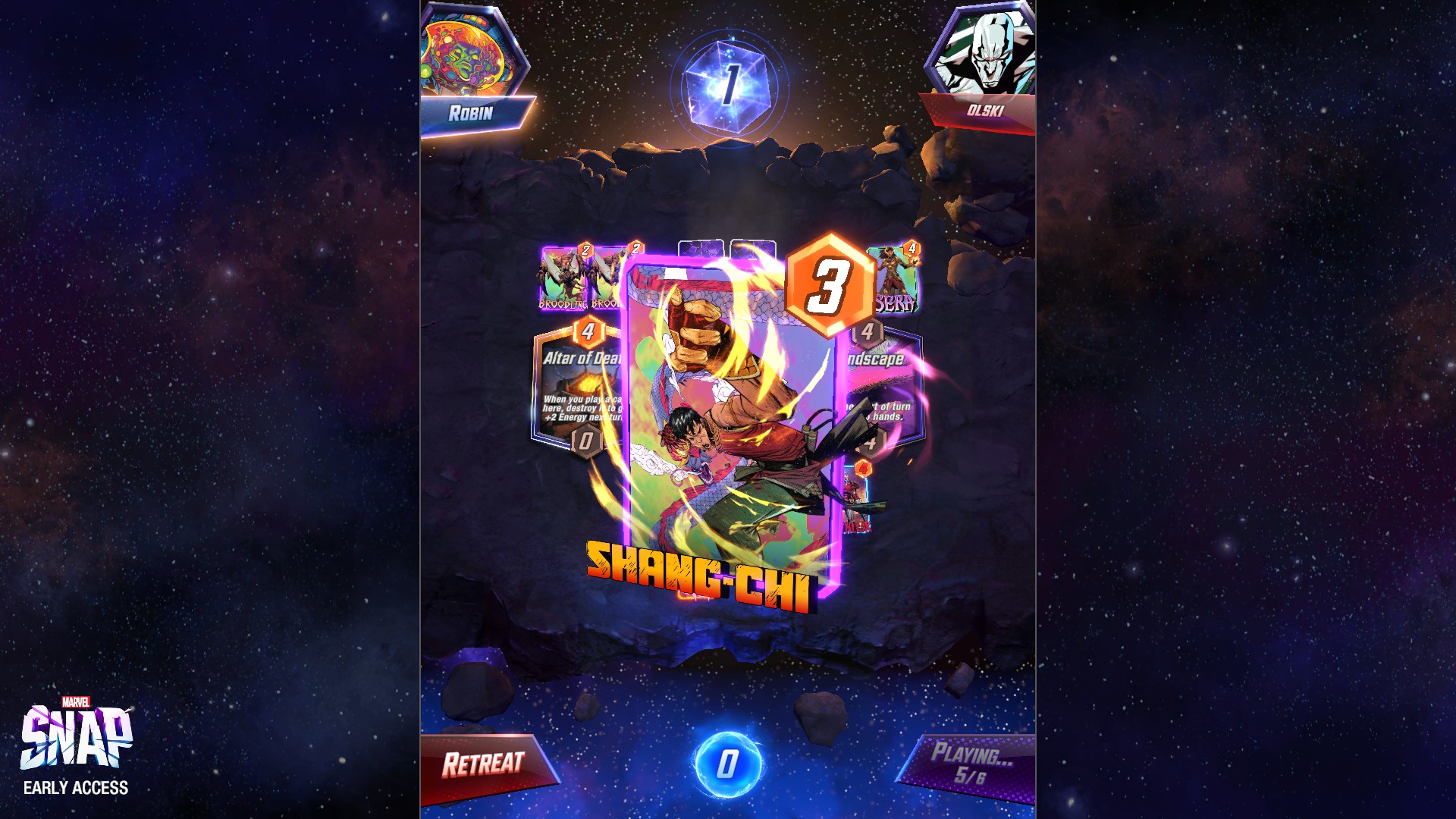
So, how is it right now?
With new cards and locations added each month, the game continues to feel pretty fresh. The meta rarely has a chance to settle, and limited-time events—primarily boosting the appearance rates of certain impactful locations—mix things up day by day. Certain cards draw ire, such as the game-swinging Leader who copies your opponent’s plays in the final turn, but on the whole, the core competitive experience feels varied and healthy.
But that doesn’t mean the current state of the game is all rosy. As it stands, the game’s huge Achilles’ heel is the process of acquiring new cards. At early levels, progression is a breeze, where you’ll regularly be adding to your collection and opening up new deck archetypes. Once you get past collection level 1,000, however—a big number, but one that doesn’t take that much time to reach—things slow to a crawl, and it only gets worse as you complete each “series” of cards.
New cards introduced to the game start in series 4 or 5—the highest, rarest tiers—which functionally means that only dedicated players—those who’ve been regularly advancing since the beta started—have any chance of getting them, and even for them it could be a month-long grind or more. The recent addition of a “token shop” where you can buy specific cards has failed to help because the tokens themselves are incredibly rare and slow to earn too.
Are players happy?
PC vs mobile

The PC version remains in Early Access for now, and it does lag behind the mobile client. Updates are simultaneous across both, and all progress transfers automatically between them, but the UI on PC is an awkward adaptation, and certain features—such as the news tab, and some events—are simply missing for now.
They are not. That throttled progression, and the failure of updates to successfully address it, is a huge point of contention. It makes the game an incredible grind, and the odd thing is it’s not one you can even really buy your way out of. Indulging in microtransactions barely moves the needle—because you usually can’t buy cards or tokens directly, and there’s no such thing as a card pack, even large investments are more likely to return junk than the high-value cards you’re after. To put things in perspective, brute-forcing the system to get a complete collection cost YouTuber RegisKillbin $2,700.
The result is a situation almost worse than pay-to-win—it’s a card game where the new cards introduced each month are completely unattainable for almost everyone. Eventually they filter down to a lower, more accessible series, but only months later, after their time in the spotlight has long passed.
That’s not a recipe for a happy community. It’s impossible to get excited about new cards you’re not going to get to try, so every new reveal is met with grumbles instead of theory-crafting. Players spend more time discussing optimal purchases and bemoaning bad pulls than they do game strategy, and there’s a growing distrust in the developers. As the face of the game, Ben Brode himself is a particularly prominent target for unhappy posters. 
Further compounding the problem is the divide between those who played in the beta and those who didn’t—the haves and have-nots of Marvel Snap. With progression from that period retained, those who got in on the ground floor are absurdly further ahead in their collections than those who started at the actual launch, and it’s hard to conceive of a progression system that could possibly please both groups at this point. The reason for the incredible rarity of series 4 and 5 cards is clearly to give those long-standing beta players, many of whom have been hoarding resources for months, something to actually aim for.
If progression had been left as it was, beta players would acquire new cards far faster than the developers could keep up with. But throttling it for their benefit leaves newer players in the dust, and the beta players remain frustrated too. It’s a no-win scenario with no obvious way out.
All of that is really not helped by the developer’s recent experimentation with bundle pricing. It’s now routine to see featured bundles on the game’s store that offer one to three card skins and some currency for $100 or more. It’s a steep price for cosmetics that the community largely agrees haven’t been of a good standard anyway, and do little to get you closer to new cards.
When’s the next update?
Each month new cards are released alongside a new season pass, laden with variants, avatars, titles, and currencies, usually tying into the latest MCU release. February’s season pass, which should launch on the first of the month, is themed around the Ant-Man and the Wasp: Quantumania film. It’ll introduce MODOK to the game—an interesting card that discards your entire hand when played, potentially making him a dramatic combo piece in certain discard decks. Also in the mix are new variants for Ant-Man and the Wasp themselves.
Developer Second Dinner has promised it’s continuing to look at possible updates to progression, and it’s heartening at least to see that they are aware of the problems, but as it stands, there’s no concrete information on what they plan to do. The approach so far has felt floundering, and the team has a lot of work to do to earn back the community’s confidence. I’d really like to see them figure it out, but even as someone who still dips in every day, I fear that the game’s magic is in serious danger of drying up.

